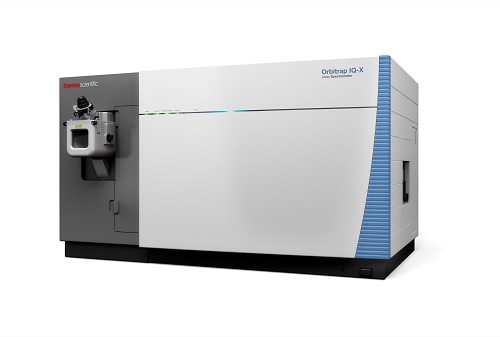
Image Credit: Thermo Fisher
Small molecule researchers in academia, pharmaceutical, and biopharmaceutical industries can now use Thermo Scientific's mass spectrometer (MS) to reveal complex chemical structures with confidence, ease and experimental versatility.
The Thermo Scientific Orbitrap IQ-X Tribrid mass spectrometer has been designed specifically for small-molecule structural elucidation of metabolites and unknown compounds. The wide range of applications includes metabolomics and lipidomics research, leachable/extractable impurities identification and forensic toxicology. The MS system provides a fit-for-purpose, new AcquireX workflow enabled by the trusted Thermo Scientific Tribrid architecture to acquire high-quality data. Performance is enhanced by a new Met-IQ workflow that leverages real-time library search with on-the-fly intelligent MS² spectral matching for the decision-based triggering of MSⁿ scan events, providing higher confidence for chemical annotation.
"Along with the enhanced intelligence-based data acquisition, the Orbitrap IQ-X Tribrid MS also uses the new Auto-Ready ion source for automated, remote, and walkaway calibration enabling the researcher to spend more time obtaining results and less time on instrument setup. Traditionally, ultra-high resolution and accurate mass calibration have been challenging and time-consuming. The new system offers researchers higher sample throughput with increased ease-of-use," said Iain Mylchreest, Vice President, research and development, analytical instruments, Thermo Fisher Scientific.
The Orbitrap IQ-X Tribrid MS utilises enhanced Thermo Scientific AcquireX workflows for increased sample throughput and ease of use. The MS system provides improved fragmentation for small-molecule analysis with options to add to the platform’s experimental flexibility. An ultraviolet photodissociation (UVPD) option provides insights on the lipid double-bond localisation, site-specific glucuronidation, and complementary fragmentation for structure assignment while the 1,000,000 (1M) resolution option improves confidence for unknown analysis and fine isotope detection.




